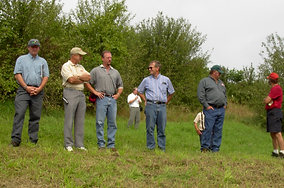top of page
New England FruitConsultants
Crop Production Consulting
What is IPM?
IPM is a federally-sanctioned approach to agriculture that promotes the use of alternative pest control methods and attempts to bring food production systems into greater ecological balance.


How does IPM work?
Pest populations are continually monitored to provide information about their presence and levels of activity in the crop ecosystem. Environmental conditions are also closely tracked to predict periods favorable for disease and insect pest development. Beneficial predators and parasites as well as cultural control practices are encouraged in order to help rebalance the crop ecosystem.
Are chemicals used in IPM?
Yes, but only when no other options are available and monitoring indicates that pest populations have reached economically-siginificant levels. When warranted, these materials are then selected for their safety and minimal environmental impact.


Why IPM?
Pest problems facing today's growers are more complex than ever before and control strategies are rapidly changing. Yet agricultural producers are under tremendous pressure to maximize crop yields and do so in an environmentally - friendly manner. These factors, along with escalating production costs, pest resistance and increasing environmental regulations make the implementation of IPM programs more and more attractive.
Have farmers responded?
The agricultural community has been quick to embrace IPM - because it works! Most apple growers in the Northeast have reduced pesticide use by more than 50% in the last thirty years using IPM techniques.

Benefits of IPM:
-
Increased net profits due to reduced pesticide usage
-
Proper timing of control measures
-
Decreased pressure for resistance to current pesticides
-
Return of naturally occuring beneficial parasites and predators
-
Protection against excessive crop loss in years of unforseen pest epidemics
-
Decreased risk of environmental contamination
-
Rapid implementation of latest technologies at the farm level
bottom of page